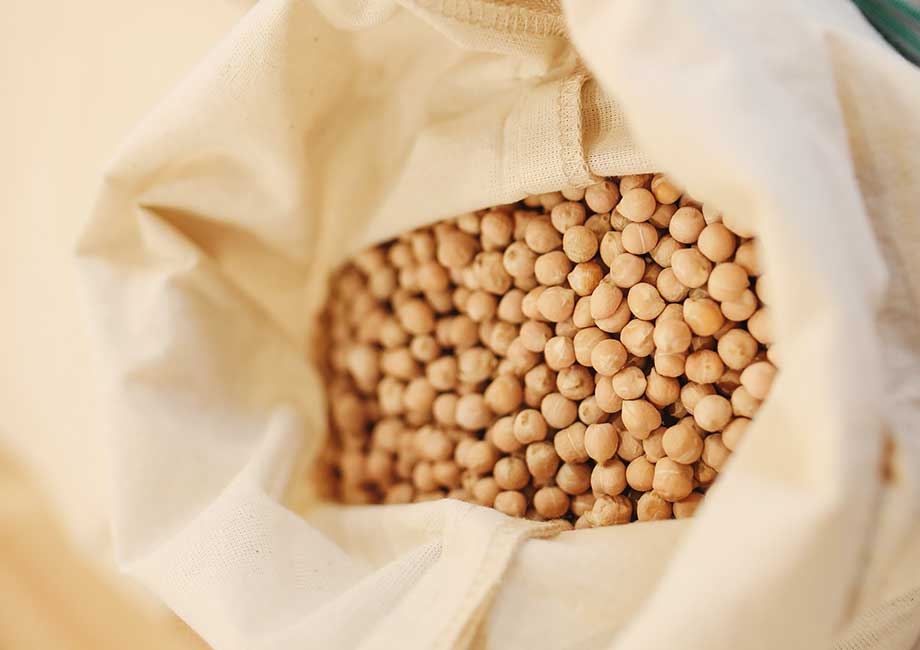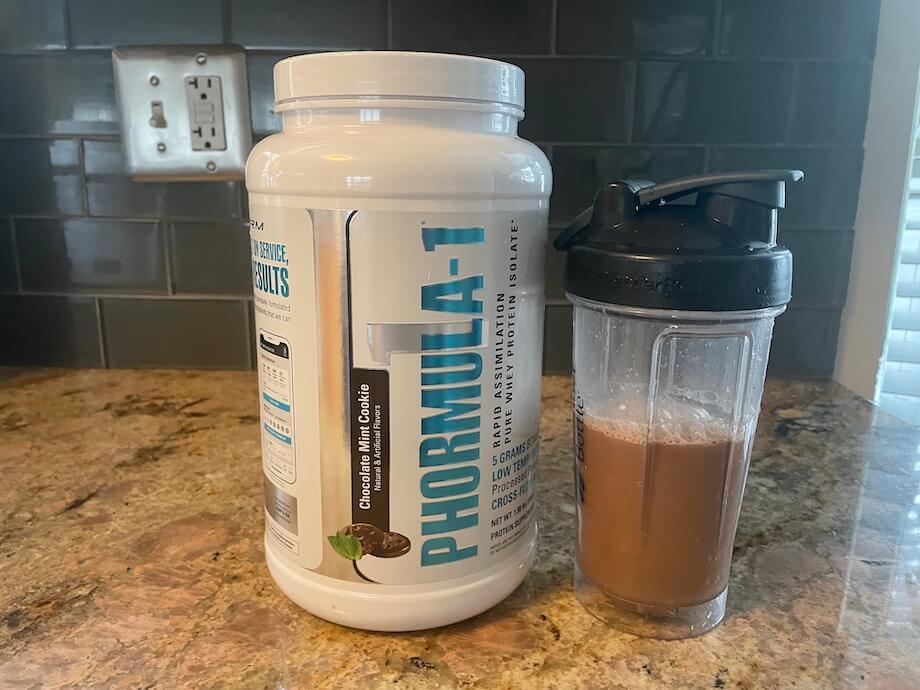Protein is an important macronutrient, made up of building blocks called essential and non-essential amino acids. Our bodies can produce non-essential amino acids, but we need a little help from our diet to obtain the essential amino acids we need. Animal proteins are complete proteins containing all the essential amino acids we need, but what if you’re not a big meat eater? High-protein vegetables to the rescue!
RELATED: Benefits of Protein
Veggies don’t typically get a lot of hype for their protein content, but don’t count them out just yet. Many vegetables offer a solid protein boost along with many other awesome health benefits. Whether you follow a vegetarian or vegan lifestyle or just want to increase your protein variety, check out this list of high-protein veggies.
Medical disclaimer: This article is intended for educational and informational purposes only. It is not intended as a substitute for medical advice. For health advice, contact a licensed healthcare provider.
Edamame
If you’re in the market for a plant-based protein source, edamame is a great option. These bright green little beans are actually young soybeans that are harvested before they have the chance to ripen, and they’re packed with protein. One cup of prepared edamame contains 18.4 grams of protein1—more protein than you’d get drinking two cups of milk!2
RELATED: Plant-Based Protein Powder Benefits

But edamame’s benefits don’t stop there. These delectable little soybeans are also high in fiber, vitamins, and minerals like vitamin K, folate, phosphorus, and iron. Plus, they’re a great source of antioxidants, which can help protect your cells from damage.
Edamame is super easy to incorporate into your diet. It’s available shelled, in a pod, fresh, and frozen. You can enjoy it on its own or add it to salads, stir-fries, and more. If you want to spice up the dips at your next get-together, try whipping up some cilantro edamame hummus.
Lentils
You’d be hard-pressed to find a dietitian who’s not a fan of lentils. Not only are these little gems super tasty, but they’re also packed with nutrition. One cup of cooked lentils has 17.9 grams of protein,3 a solid amount for a plant-based protein. They’re also loaded with fiber, iron, and other essential nutrients, making them a great way to boost the nutrition profile of your meal.
The best part? Lentils are super versatile and can add a hearty and flavorful element to any meal. You can use them in soups, stews, dips, and salads. And if you’re looking to go meatless, lentils can be a great meat substitute in dishes like veggie burgers and meatless meatballs. Just check out this vegan lentil burger recipe.
RELATED: High-Protein Foods for Weight Loss
Black Beans
Black beans get a lot of hype as a high-protein veggie, and let me tell you—they deserve it. Cooked black beans contain a good bit of protein, with 15.2 grams in every cup.4
But these legumes offer more than just protein. They’re also high in fiber and contain starch, a complex carbohydrate. This slow-burn energy store digests slowly and helps prevent blood sugar spikes. They’re also super versatile. Add them to soups, salads, tacos, or chili for a boost of protein and flavor. They are especially tasty when mixed into a quinoa bowl.
Chickpeas
Whether you’re vegan, vegetarian, or just looking to add more plant-based foods to your diet, chickpeas are worth checking out. One cup of cooked chickpeas, also called garbanzo beans, contains 14.5 grams of protein,5 a relatively hefty serving of protein. But chickpeas don’t stop there. They’re also a good source of carbs and contain many other nutrients like folate and other B vitamins.

But do they taste good? You bet! Chickpeas are incredibly versatile. You can look at them like a blank canvas and add them to your favorite soup, salad, or curry recipes. And, of course, you can always make some delicious hummus with them!
Mung Beans
Mung beans are small green beans known for their high protein content. These little gems are part of the legume family and are quite popular with those who follow vegetarian and vegan diets. They are a great source of protein for those who meet their daily protein needs with plant-based protein sources alone.
One cup of cooked mung beans provides 14.2 grams of protein6 and 15.4 grams of fiber. They’re also loaded with folate and many other vitamins and minerals that offer a slew of health benefits.
Not sure how to cook mung beans? Good news—you can enjoy them in a variety of ways, including sprouted, boiled, or roasted. You might even consider trying mung bean popsicles, a historically classic frozen treat in Shanghai.
Green Peas
Green peas are pretty awesome little veggies. They’re packed with great flavor and they offer some solid nutrition. One cup of cooked peas provides 134 calories and 8.5 grams of protein.7
Plus, they contain a good amount of fiber and just about every vitamin and mineral that the body needs. They can be tasty on their own, or you can add them to various dishes like soups, stews, or salads. They also make a great addition to a number of side dishes, such as couscous primavera.
RELATED: High-Protein, Low-Fat Foods
Sweet Corn
If you’re looking for a low-carb, high-protein veggie, sweet corn probably isn’t it. Corn is relatively high in carbohydrates compared to other veggies, and sweet corn is no exception. So what makes sweet corn so sweet? A genetic mutation causes sweet corn to store at least twice as much sugar as regular field corn.

But I’m not knocking sweet corn! It can be a great and nutritious addition to your healthy eating. One cup of cooked sweet corn provides 34 grams of carbohydrates and 5.2 grams of protein.8 However, even though it’s not super high in protein, it still contains other nutrients like potassium, thiamine, and magnesium.
Enjoy it grilled, roasted, boiled, or added to any number of delicious recipes like a summer salad.
Artichokes
The ever-classic artichoke dip is a staple favorite for delicious appetizers. But the truth is, we don’t have to wait for a night on the town to enjoy the many benefits of artichoke hearts. They’re packed with all sorts of good stuff and are super easy to incorporate into your routine.
One cup of cooked artichokes provides 4.9 grams of protein.9 While that may not be much compared to other protein sources, like meat and beans, it can still boost your daily protein intake as part of a well-balanced diet.
In addition to the veggie’s protein punch, it’s also loaded with fiber. Yay for a healthy gut! One cup of cooked artichoke contains almost 10 grams of fiber. And enjoying an artichoke can be as easy as popping them in the air fryer.
Potatoes
While potatoes are rich in nutrients like potassium and vitamin C, they’re not exactly known for their protein content. For example, one medium-sized potato contains just 4.5 grams of protein10—probably not a significant contributor to your muscle mass gains, but still better than nothing!
Sweet potatoes contain even less protein but are rich in vitamin A, which is vital for our vision and immune system. The fun thing about potatoes of any kind? The cooking possibilities are endless! You can bake, broil, roast, or mash them and add them to breakfast, lunch, or dinner. They can even be a great way to add some bulk to your high-protein meals like egg-bite muffins.
RELATED: How Many Grams of Protein Are In an Egg?
Brussel Sprouts
Brussels sprouts are probably not the first vegetable that crosses your mind when you think of protein, but don’t knock them just yet! One cup of cooked Brussels sprouts offers almost 4 grams of protein,11 which is pretty decent considering how low in calories they are.

Need more convincing before adding them to the menu? Brussels sprouts are also rich in vitamins and minerals. A half-cup serving meets 91% of the Daily Value of vitamin K12 and 53% of the Daily Value of vitamin C.13
And you won’t get bored with Brussels sprouts! Enjoy them roasted with balsamic vinegar and honey, steamed and tossed in a salad, or even shredded for a stir-fry base.
Why Is Protein Important?
Protein plays an important role in the body. Actually, it plays many important roles in the body. The essential macronutrient is made up of amino acids, often called building blocks, that the body uses for many biological processes. For example, protein is required for building and repairing muscle and bone and making hormones and enzymes.
Our bodies need a steady supply of protein to perform these critical functions, but how much protein is enough protein? The average healthy adult typically needs 1-1.2 grams of protein per kilogram of body weight. However, it’s important to remember that everyone’s nutrition needs are different. The amount of protein we need depends on our medical history, activity demands, body size, age, and sex.
If you have questions about your unique nutrition needs, consider meeting with a registered dietitian to design a meal plan that fits your needs.
RELATED: How Much Protein Should I Eat to Lose Weight?
High-Protein Vegetables: Final Thoughts
You may not have to look far if you’re looking for new ways to up your protein intake without relying on dietary supplements. When most of us think of high-protein foods, we rightfully think of meat and other animal products. However, incorporating protein-rich veggies into your healthy eating can be a delicious and efficient way to meet your protein needs. While there’s really no such thing as a superfood, I think veggies are pretty super.
- A diet that incorporates a variety of vegetables can help support healthy cholesterol and blood pressure.
- Veggies are a great way to meet your vitamin and mineral needs.
- Vegetables tend to be rich in fiber, helping to support our gastrointestinal health.
- Legumes can be an excellent source of protein.
- Veggies that are lower in protein are still valuable as they contain many other essential nutrients.
High-Protein Vegetables: Q&A
Which vegetable has the highest protein?
On this list, edamame has the highest protein content. One cup of prepared edamame contains over 18 grams of protein.
What vegetables have more protein than meat?
Veggies like broccoli and spinach tend to have more protein per calorie than meat. For example, one cup of cooked spinach provides more than 5 grams of protein and just 41 calories. Still, you’d have to eat a lot of these leafy greens to get the same amount of protein as a chicken breast or steak.
Which food has the highest protein?
Animal meats tend to have the highest protein content. Chicken, turkey, fish, and beef are excellent protein sources.
What vegetables are high in protein and low in carbs?
Non-starchy veggies like collard greens, peppers, cauliflower, and broccoli tend to be richer in protein than carbohydrates. Still, while their macronutrient portions favor protein, you’d need to eat a significant amount of these vegetables to meet your protein needs.
These statements have not been evaluated by the Food and Drug Administration. This product is not intended to diagnose, treat, cure, or prevent any diseases.
References
- USDA. (2019, April 1). Edamame, Frozen, Prepared. FoodData Central. Retrieved April 20, 2023, from https://fdc.nal.usda.gov/fdc-app.html#/food-details/168411/nutrients
- USDA. (2019, April 1). Milk, Low-Fat, 1% Milkfat. FoodData Central. Retrieved April 20, 2023, from https://fdc.nal.usda.gov/fdc-app.html#/food-details/170873/nutrients
- USDA. (2019, April 1). Lentils, Mature Seeds, Cooked. FoodData Central. Retrieved April 20, 2023, from https://fdc.nal.usda.gov/fdc-app.html#/food-details/172421/nutrients
- USDA. (2019, April 1). Beans, Black, Mature Seeds, Cooked. FoodData Central. Retrieved April 20, 2023, from https://fdc.nal.usda.gov/fdc-app.html#/food-details/173735/nutrients
- USDA. (2019, April 1). Chickpeas, Mature Seeds, Cooked. FoodData Central. Retrieved April 20, 2023, from https://fdc.nal.usda.gov/fdc-app.html#/food-details/173757/nutrients
- USDA. (2019, April 1). Mung Beans, Mature Seeds, Cooked. FoodData Central. Retrieved April 20, 2023, from https://fdc.nal.usda.gov/fdc-app.html#/food-details/174257/nutrients
- USDA. (2019, April 1). Peas, Green, Cooked. FoodData Central. Retrieved April 20, 2023, from https://fdc.nal.usda.gov/fdc-app.html#/food-details/170102/nutrients
- Chef John. (2023, February 12). Couscous Primavera. Allrecipes. Retrieved April 21, 2023, from https://www.allrecipes.com/recipe/221976/couscous-primavera/
- USDA. (2019, April 1). Corn, Sweet, White, Cooked. FoodData Central. Retrieved April 20, 2023, from https://fdc.nal.usda.gov/fdc-app.html#/food-details/168540/nutrients
- USDA. (2022, October 28). Artichoke, Canned, Cooked. FoodData Central. Retrieved April 20, 2023, from https://fdc.nal.usda.gov/fdc-app.html#/food-details/2345355/nutrients
- USDA. (20219, April 1). Potatoes, Russet, Baked. FoodData Central. Retrieved April 20, 2023, from https://fdc.nal.usda.gov/fdc-app.html#/food-details/170030/nutrients
- USDA. (20219, April 1). Brussels Sprouts, Cooked. FoodData Central. Retrieved April 20, 2023, from https://fdc.nal.usda.gov/fdc-app.html#/food-details/169971/nutrients
- U.S. Department of Health and Human Services. (2021, March 29). Vitamin K. NIH Office of Dietary Supplements. Retrieved April 20, 2023, from https://ods.od.nih.gov/factsheets/VitaminK-HealthProfessional/
- U.S. Department of Health and Human Services. (2021, March 26). Vitamin C. NIH Office of Dietary Supplements. Retrieved April 20, 2023, from https://ods.od.nih.gov/factsheets/VitaminC-HealthProfessional/







